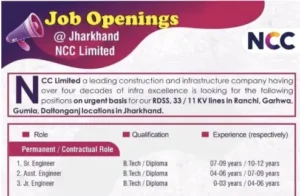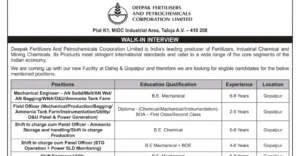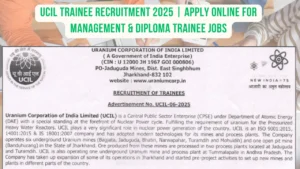Medieval History MCQs | Indian Medieval History | Top Medieval
History MCQs with Answer Quiz |
Medieval History MCQ type Questions with answer
1. Whose philosophy is called the Advaita?
(A) Ramanujacharya
(B) Shankaracharya
(C) Nagarjuna
(D) Vasumitra
Answer: B
2. Jayadeva, who wrote ‘Gita Govinda’ was the court poet of?
(A) Laxman Sensation of Sena dynasty
(B) Dharmpala of Pala dynasty.
(C) Gopala of Pala dynasty
(D) None of the above
Answer: A
3. Who among the following built the temple of the Sun God at Konark?
(A) Anantavarman
(B) Narasimha I
(C) Kapilendra
(D) Purushottama
Answer: B
4. Which kingdom did the temple of Hazara Rama belong to?
(A) Avadh
(B) Travancore
(C) Vijayanagara
(D) Ahom
Answer: C
5. The greatest stylistic forms of temple architecture during the early medieval period were the Nagara, the Dravida and the Vesara which of the following.was the geographical spread of the Dravida style?
(A) Between Vindhyan and Krishna rivers
(B) Between Krishna and Cauvery rivers
(C) Between Vindhyan and Cauvery rivers
(D) Between Godavari and Krishna rivers
Answer: D
Click Here For Ancient History MCQs
6. Which of the following.temples are built by the Rashtrakuta Kings?
(A) Kashivishvanatha temple and the Jain Narayan temple at Pattadakal
(B) Someshwara temple at Sogal.
(C) Andhakeshwar temple at Hooli.
(D) All of the above.
Answer: D
7. In what way did the policy of the Rashtrakutas differ from their predecessors in the Deccan?
(A) They tried to maintain good relations with the Southern kingdoms while waging wars in the North.
(B) They attempted to be the transmitters of good ideas from one part to the other.
(C) They tried to exploit their positions as a bridge to dominate both the North and the South.
(D) They tried to maintain the balance of power in the struggle between the North and the South.
Answer: C
8. Which of the following statements is/are correct?
(A) Kalhana was the contemporary of the Lohara king of Kashmir, named Harsha.
(B) Chachnama is a famous book on the history of Sindh.
(C) The Parmar king Bhoja is believed to be have been the author of about two dozen’s work on a variety of subjects, medicine, astronomy, architecture etc.
(D) All of the above.
Answer: D
9. Ramacharita written by Sandhyakara Nandi in the AD 12th century was the?
(A) Story of Lord Rama in a popular poetic style in Oriya language.
(B) First translation of Valmiki’s Ramayana into Telugu language.
(C) Story of a love affair between a rich merchant of Pataliputra and a beautiful courtesan.
(D) Story of the conflict between the Kaivartha peasants and a Pala prince.
Answer: D
10. According to Al beruni, the successors of the Kushans who ruled over North India in 10th-11th centuries were
(A) Gahadavals.
(B) Karamatiyas of Multan.
(C) Hindu Shahiyas.
(D) Kalchuris.
Answer: C
11. The main targets of Mahmud Ghazni’s attacks were large towns and temples because
(A) Victory over them would have given greater renow.
(B) Destruction of large temples and towns shattered the moral of Indian people.
(C) They were repositories of immense wealth.
(D) All of the above.
Answer: C
Click Here For Ancient History MCQs
12. Who came to India at the instance of Sultan Mahmud?
(A) Al beruni.
(B) Sulaiman.
(C) Al Masudi.
(D) Ibn Hauql.
Answer: A
13. Muhammad Ghori invaded India on account of his
(A) Vaulting ambition of expansion of his empire.
(B) Love of conquest and power.
(C) Desire to propagate Islam.
(D) Both “a” and “b”
Answer: D
14. The Turkish commander who conquered Bihar and Bengal was
(A) Mohammad of Ghur.
(B) Qutab-ud-din-Aibak.
(C) Ikhtiyar-ud-din Muhammad.
(D) Bakhtiyar Khalji.
Answer: D
15. Which of the following was not a result of the Turkish conquest on India?
(A) It paved the way for the liquidation of multistate system in India.
(B) It broke the isolation of the Indian society.
(C) It led to an urban revolution and development of trade and commerce.
(D) It helped in the growth of liberal religious reform movement in Hinduism
Answer: D
16. During Muhammad Ghori’s absence on account of engagements with the Turks in Central Asia, who principally looked after the affairs of India?
(A) Bakhtiyar Khalji.
(B) Ikhtiyar-ud-din Muhammad.
(C) Qutab-ud-din-Aibak.
(D) Muiz-ud-din-Muhammad bin Sam.
Answer: C
17. Which of the following dynasties built the Khajuraho Temples?
(A) Chandelas.
(B) Chahamans.
(C) Paramars.
(D) Tomars.
Answer: A
Click Here For Ancient History MCQs
18. The Rajputs were repeatedly defeated by Turks because of
(A) Failure on the part of Indian rulers to grasp the true significance of the earlier raids of Sultan Mahmud.
(B) Reinforcement of good central Asian horses provided a better livestock for the Afghan cavalry.
(C) The Central Asian military tactics used by the Afghan were superior to Indian military tactics.
(D) All of the above.
Answer: D
19. During the rein of which one of the following dynasties of Kashmir of this period, did the famous queen, Didda seize the throne?
(A) Karkota dynasty.
(B) The house of Utpala.
(C) Lohara dynasty.
(D) The line of Parva Gupta.
Answer: D
20. Iqta in Medieval India meant
(A) Land assigned to religious personnel for spiritual purposes.
(B) Land revenue from different territorial unites assigned to army officers.
(C) Charity for educational and cultural activities.
(D) The right of the zamindars.
Answer: B
21. The Hindu Shahi ruler who burnt himself on a funeral pyre after being defeated by Mahmud Ghazni?
(A) Jayapala.
(B) Anandapala.
(C) Trilochanapala.
(D) Bhima.
Answer: A
22. Which of the following Rajput clans was not one of the so-called Agnikula origin?
(A) Chandelas.
(B) Pariharas.
(C) Chahamans.
(D) Chalukyas or Solankis.
Answer: A
23. Which one of the following was the official language of Gupta period?
(A) Pali.
(B) Magadhi
(C) Prakrit.
(D) Sanskrit.
Answer: D
24. Which of the following statements is/are correct?
(A) The city of Dhilika (Delhi) was founded by the Tomar’s in AD 736 but Chauhans overthrew them and occupied it in the 12th century.
(B) Chandela was the first early medieval dynasty to use Hindi in Devanagri script in its epigraphs.
(C) The Sena King, Ballala Sena, is credited with the founding of Kulinism, a system of superiority of higher castes.
(D) All of the above.
Answer: D
25. The famous image of Vagdevi which is the insignia of the Jnanpith Award, is associated with the king?
(A) Bhoja (Parmar(A).
(B) Vigraharaja IV (Chauhan).
(C) Kumar Pala (Chaluky(A).
(D) Vidya Dhar (Chandel(A).
Answer: D
Click Here For Ancient History MCQs
26. It is said that the “real cause of the defeat of the Rajputs against the Turks lay in the prevalent social system”, because
(A) In the caste-ridden society, the defence of the country was the sole concern of the Rajputs.
(B) It rendered all other people psychologically unfit for military service.
(C) It killed the national will to put a common front against the Turks.
(D) All of the above.
Answer: D
27. A popular Hindi film based on the famous Sanskrit play, Mṛcchakaṭikā, was titled
(A) Meghadoot.
(B) Amarapali.
(C) Utsav.
(D) Shakuntala
Answer: C
28. Which of the following did not form a part of the donations made to the temples?
(A) Money.
(B) Slaves.
(C) Livestock.
(D) Land.
Answer: B
29. One consistent features found in the history of Southern India was the growth of the small regional kingdoms rather than large empires because of
(A) the absence of minerals like iron.
(B) too many divisions in the social structures.
(C) the absence of vast areas of fertile land.
(D) the scarcity of manpower.
Answer : C
30. Which of the following was not one of the feudal obligations of the feudatories to the overlord?
(A) Attendance at court and payment of tribute to the overlord.
(B) For smaller feudatories, permission from the king for any change in the administration of their property.
(C) Maintenance of a specified numbers of troops and payment of tribute to the king.
(D) Permission of the king for matrimonial alliances.
Answer: D
31. Who among the following gave asylum to Zoroastrians who fled by sea and by the coastal route from Persia to Western Indian in the early 8th century?
(A) Chalukyas.
(B) Cholas.
(C) Hoysalas.
(D) Rashtrakutas.
Answer: D
32. Which one of the following titles was not used by the feudatories of the period?
(A) Panchamahasabda.
(B) Mahamandalesvara.
(C) Mandalika.
(D) Mahasamanta.
.
Answer: A
Click Here For Ancient History MCQs
32. With the increase in the number of intermediaries, the peasant was forced to pay taxes in addition to the basic land tax. Which of the following was not one of these additional levies?
(A) Separate taxes levied by the feudal tenants for the maintenance of public works.
(B) Taxes on goods produced by the craftsman.
(C) The levies imposed by the temples.
(D) The caste levies by the caste panchayats.
Answer: D
33. In early Medieval India what did the term, Jital refer to
(A) Weight.
(B) Diet.
(C) Coin.
(D) Game.
Answer: C
34. Why has Al Beruni written that there was little difference and Vaishyas and Shudras?
(A) Vaishyas joined the fold of agriculturist.
(B) With the decline of trade and commerce, the Vaishyas lost their economic status.
(C) Vaishyas came to marry freely with the Shudras caste.
(D) Both “a” and “b”.
Answer: D
35. The famous Kailasa Temple, cut out of solid rock at Ellora, was built under the patronage of the
(A) Cholas.
(B) Kadambas.
(C) Pallavas.
(D) Rashtrakutas.
Answer: D
36. Which of the following explains the change in the traditional six-fold duty of the Brahmins during this period?
(A) Agriculture could be practised by a Brahmin in distress in addition to his six-fold duty.
(B) Agriculture was viewed more or less as a regular vocation of the Brahmin, an d not as an occupation to be adopted only in distress.
(C) Agriculture which involved injury to beings and was dependent on others, could not be practised by a Brahmin.
(D) The status of the Brahmin was known by his profession.
Answer : B
37. There was a large proliferation of castes during the early medieval period due to
(A) transformation of crafts and occupations into castes.
(B) emergence of large number of mixed castes.
(C) localisation of castes.
(D) Both “a” and “b”
Answer : D
38. Which one of the following statements about Brihadeswara temple at Tanjavur, is not correct?
(A) The temple is a splendid example of Chola architecture.
(B) It was built emperor, Rajaraja.
(C) The temple was constructed of granite.
(D) The temple is a monument dedicated to Lord Vishnu.
Answer : D
Click Here For Ancient History MCQs
39. Shankaracharya was mainly a
(A) Shaiva
(B) Vaishnava
(C) Shakta
(D) Sauro pasaka
Answer: A
40. Which of the following is not one of the well-known mixed castes of the period?
(A) Ambastha (Vaidy(A).
(B) Magadha (court- bar(D)
(C) Modaka (sweet meat maker)
(D) Kayasthas (scribes and clerks)
Answer: C
41. The Badami rock inscription of Pulakesin 1st is dated in the Saka year, 465. If the same were to be dated to Vikrama Samvat, the year would be
(A) 601.
(B) 300
(C) 330
(D) 407.
Answer: A
42. Who among the following laid the foundation of Rashtrakuta Empire?
(A) Amoghavarsha I.
(B) Dantidurga.
(C) Dhruva.
(D) Krishna I.
Answer: B
43. Which one of the following scientific subject was not taught in the University of Nalanda?
(A) Medicine and pharmacology.
(B) Astronomy.
(C) Metallurgy.
(D) Life sciences.
Answer: D
44. Bronze icons of Nataraja casted during the Chola period invariably showed the deity with
(A) Eight hands.
(B) Six hands.
(C) Four hands.
(D) Two hands.
Answer: C
45. Who among the Chola king reined as Kulottung Chola I?
(A) Vikramaditya I
(B) Vikramaditya II
(C) Rajaraja Narendra I
(D) Rajendra III
Answer: D
46. Which one of the Chola kings conquered Ceylon?
(A) Aditya I
(B) Rajaraja I
(C) Rajendra
(D) Vijayalaya
Answer: B
47. Which of the following Chalukyan city is known as the City of Temples?
(A) Pattadakal
(B) Badami
(C) Aihole
(D) Kanheri
Answer: C
48. Ghori directed his first invasion against
(A) Multan
(B) Sindh
(C) Punjab
(D) Anhilwara
Answer: B
49. Kalhana was a contemporary of Lohra king of Kashmir named
(A) Harsha
(B) Utakarsha
(C) Kalasa
(D) Ananta
Answer: A
Click Here For Ancient History MCQs
50. Temple of Somnath which was destroyed by Mahmud Ghazni was dedicated to Lord
(A) Vishnu
(B) Shiva
(C) Surya
(D) Ganapati
Answer: B













